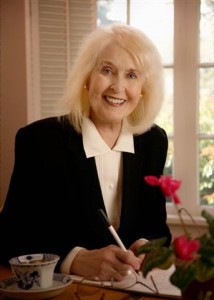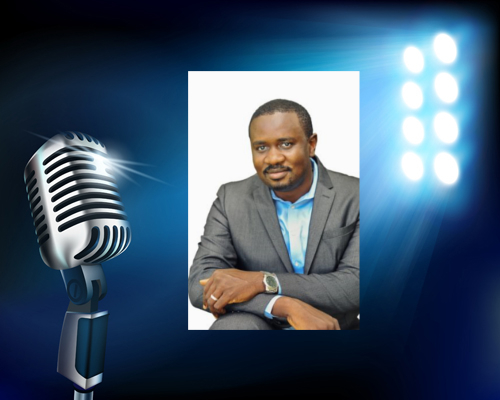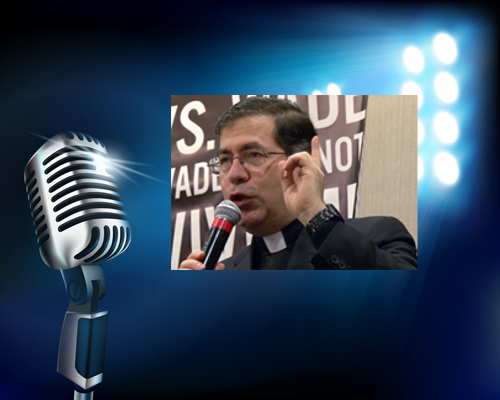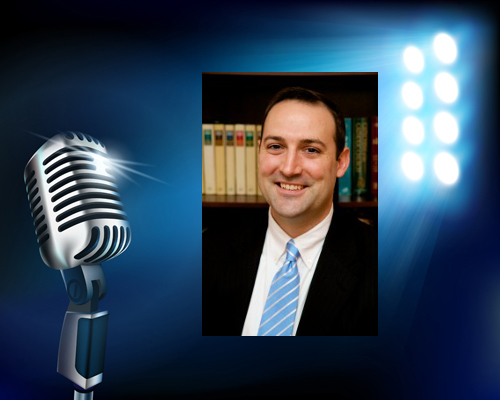PETE: What drew you to the topic of saints and their miracles for your book Nothing Short of a Miracle : God’s Healing Power in Modern Saints.
PATRICIA TREECE: My child’s cancer at age 14 triggered the first edition (Doubleday Image 1987). A hospital gift shop offering nothing to console or encourage either of us beyond stuffed animals, flowers, glossy magazines, and candy left me determined to write something I could have read aloud to her (thank God for the psalms and Erma Bombeck, that wonderful Catholic humorist). But I had the topic on “the list” ever since God introduced me to His friends, the saints. He had prepared me before I entered the Church for the work of my life- I understand this only in retrospect, of course!
First the call to show the unbroken line from the apostles (Paul urging “Be imitators of me as I am of Christ” 1 Cor. 10:33) continues right into our day of individuals catching and handing down faith and developing heroic virtues. Second, perhaps because when I began writing the Church was so “rational,” to re-awaken belief in wonders, according to the Lord’s injunction that if you can’t believe in Him for any other reason, believe because of His works, and his promise that his disciples would do the same things in God’s power. But this call goes beyond any of the saints. It has always been to show God’s reality, love, and power through their surrendered lives, particularly their virtues. And to do it through modern saints for immediacy and research authenticity. That’s why this book is dedicated to Jesus.
As I say His saints “only mirror Him dimly” however they edify. I felt I should do this second edition to assure readers that incredible healings given by God through seeking the intercession of His saints (just one of many ways, I make clear, to pray for healing), did not stop in 1987 when the first edition came out. They are on-going and that is one reason, among a great deal of new material, the beatification and canonization miracles of John Paul II open this edition and the cure accepted for the beatification of Mother Teresa of Calcutta is the final chapter.
PETE: This book is jammed packed full of stories of miraculous healings. How much time goes into gathering information for a book such as Nothing Short of a Miracle?
PATRICIA TREECE: My entire adult life in this case. I began making notes on miracle cures early on after discovering the saints following my conversion on a cold winter day reading scripture in the empty Lourdes Grotto just after my college graduation. I should explain God had provided that I was a trained journalist. One of the last things my Protestant father did before leaving me a total orphan my freshman year was to say I must not major in novel writing; to be able to earn a living, I must major in Journalism. So as a trained researcher used to keeping personal files on things that intrigue and may be useful later, I began collecting cures through saints. I have enough well-authenticated events to fill many books. They edify me and buttress my faith that the world is much wider and deeper than what I can take in with my senses.
PETE: In all your research is there one particular saint that really amazed you with their attributed miracles?
PATRICIA TREECE: There are many saints with amazing cures given by God through the charism of healing during their lives. And there are amazing cures given by God after a saint’s death to honor the person and signal this is someone God wants to see held up as a role model for following Jesus and a reliable intercessor. I think less of individual saints and more of particular cures. Two cures I find particularly compelling relate to a child receiving a new heart and a young worker’s humanly impossible cure from terrible burns. The first story I had from interviews with the mother and, for this edition, the mother and the now adult daughter. I was introduced to the family while writing the first edition by one of Padre Pio’s fellow Capuchins, a spiritual son (hating fact errors and muddled data, I try to work with authoritative sources). This great miracle, meeting all 7 of the Church’s criteria for a true one, involves an after-death appearance to a tyke born with only part of a heart who was reaching the limits of her life (her heart literally could not support her growing body). A few hours after her mother and father, in desperation turned to dead Padre Pio’s prayer intercession “an old man in a brown dress” appeared to the frail child. Her parents saw nothing and didn’t believe her. The next day at the hospital, the doctors discovered a complete and healthy heart. I also have the first-person account from an apprentice machinist in whose face and eyes a ball of molten lead exploded while St. Andre Bessette was alive in Montreal. This cure after a word or two with the saint left a face the next day without even a scar. This miracle amazes me and strengthens my faith in God.
At this moment God is doing incredible cures through Bl. Francis Xavier Seelos, a Redemptorist buried in New Orleans, at whose beatification in 2000 I had the grace to be present, having written the first accounts of the healing of terminal liver cancer accepted for his rise to the altar. The on-going Seelos cures show, as the blinded infant of the Prologue – whose cure was one of Mother Cabrini’s beatification miracles and who grew up to become a priest – put it, that “the age of miracles has not passed.”
PETE: What do you hope the readers of Nothing Short of a Miracle take away from it?
PATRICIA TREECE: As I say in the Introduction, if people just see asking saints to pray for them as one possible form of reaching out for healing, the book has accomplished its purpose. If they also are convinced that miracles are going on all the time all around us and believe more in God’s reality, love, and power, that would grace them and me.
I’d also be so happy for each person who can recognize God’s love however it is demonstrated as miracles take many forms: in moving on with serenity to the greater life to come, being helped to live fully with a chronic condition, or receiving an inexplicable cure of something terminal, just to mention three possibilities.
It would also be a wondrous gift if someone out there glimpses the unbroken, although sometimes neglected, line of God’s miracle-bearers from Peter and Paul all the way to people healing or receiving miracles in the Lord’s name today – the call to be a healing Church is as real today as in the book of Acts.
PETE: You have written multiple other books which include books on Maximilian Kolbe, Padre Pio, Pope John XXIII, and St. Therese of Lisieux. Would you like to tell us a little about these?
PATRICIA TREECE: I was bludgeoned by one of Kolbe’s Conventual Franciscans, so to speak, into doing a book the Harper & Row editors wonderfully titled A Man for Others on St. Maximilian Kolbe for his canonization (I wanted to learn Polish and spend 20 years to do it right – my right, not God’s!). This, my first book for adults, told Kolbe’s life through roughly 100 people who knew him, including men I interviewed who worked with him in the missions or were in the line-up at Auschwitz where Kolbe volunteered to die for another man. Max has been a huge inspiration to me and, they tell me, to many others through many foreign translations. This year a 30th publication year edition is available. I rejoice that I was permitted to add a brief review of the charges of anti-Semitism that accompanied the canonization which were widely circulated and believed, in spite of the saint’s already having been cleared by a joint Jewish-Catholic investigation. I believe the main target was the Polish pope.
I am grateful to God for another publisher enticing me to do a biography on John XXIII. During that four year project done with the guidance of John’s private secretary, a retired archbishop, John did my soul so much good. His joyful, expansive spirit, while always completely in line with the Church, is the most representative (with two other saints) of my own ideas about God, about humanity, about the world and about what the Church and followers of Jesus ought to be for others. To know him is to love him.
St. Therese is a sister in God to me, as I feel part of her entire family. I had contacted a publisher during her centennial year only to be told “too late.” Well, accept that I wanted to do something for you, I said to her. Almost at once another publisher unknown to me phoned and offered a project on Therese, which like the book on John had its little publishing successes. I had also had the inestimable privilege of working in the Lisieux archives with her community’s permission for an earlier book featuring Therese among others. Like a good sister, she also does me many personal favors!
PETE: Do you currently have any other projects you are working on that you can share with us?
PATRICIA TREECE: I have written on Padre Pio in many books, including Nothing Short of a Miracle, always vetted by the Friary and my mentor there, the late Joseph Pius Martin. Servant Press, for whom I did a biography and two books of reflections from Pio’s writings and life, has now put together a Sampler from these books called tentatively The Fire of Love. My part is to contribute an Introduction and eight commentaries for the eight sections. As usual, spending time with Pio is bringing me closer to God and deepening my belief in supranatural realities. That book will appear next year, 2014.
My next project is a gift of gratitude to St. John Bosco I desire to offer for his 2015 bicentennial. Don Bosco is one of the first saints I discovered. His child rearing system helped this orphan with no mom or dad to call to mother two children who love God in spite of all my mistakes and weaknesses. By choice, this will be my first book without a contract. I’ll be 75 before year’s end with issues related to a kidney transplant, including two chronic conditions. I need to retire from the challenges of deadlines before I have to let people down.
When I have completed the work, I hope the Lord will guide me to a distributor for it. I say to encourage some other writer that generally, I find the older I get, the more suffering of varied kinds is needed over each project so that the books might do the good they are called to do. I know the main thing, Pio would tell me, is not having or failing to have a distributor but to “stay attached to the thread of His will.” I am grateful to the saints who hoist this weaker sister to their shoulders in my moments of confusion and anxiety and carry me along where God wants me to go. For all of us, ridiculously presumptuous as it may appear in my case, that is to holiness.
PETE: Time for my signature ending question. This is a blog about books. What is currently on your bookshelf to read?
PATRICIA TREECE: Let me chuckle that I am glad you caught me just after publication of Nothing Short of a Miracle and just after turning in the materials for Fire of Love. Since grade school when – having lost my mom at age two – I escaped into three books a day from caretakers who sometimes were not very caring, I love nothing more than vacationing in my armchair. I inhabit wonderful worlds with wonderful people (I have learned to protect my soul by staying away from dark literature and all dark media). But when I am writing a book on a saint or a saint-related topic, I want to not let other worlds dilute my focus. Also I want to sacrifice something for the work. So I give up reading for pleasure and read only on the particular saint or saints and things related to the project.
When I am at leisure, like the busman’s holiday, I love to read books on saints! I believe all our recent popes are holy. Now I will have time to read all the books I can find on Pope Benedict, such as the one by his brother, and hopefully another in Italian Robert Moynihan recommends. And I want to read Robert Moynihan’s new book on Pope Francis (Pray for Me : The Life and Spiritual Vision of Pope Francis, First Pope From the America’s) and the books each of these popes have co-written with rabbis such as On Heaven and Earth which Pope Francis did with Rabbi Abraham Skorka.
I am also very excited for a book sent by the priest friend Fr. Bob Gavotto, O.S.A. who helped me greatly with my interviews with Archbishop Capovilla regarding John XXIII. I haven’t read Italian for several years so it will be slow going but I can’t wait to dig into I Miei Anni Con Papa Giovanni XXII: Conversazione con Ezio Bolis (My Years with Pope John XXIII: Conversations with Ezio Bolis) by Loris F. Capovilla, the retired Archbishop onetime papal secretary. I am very interested in children’s education and before I revisit Don Bosco and his system based on love, I have already started a few days ago Beauty in the Word: Rethinking the Foundations of Education by Stratford Caldecott.
I also love fiction. On my bookshelf to reread is Little Boy Lost by Marghanita Laski, a Jewish atheist, it is said, that I find a beautiful piece of writing and a wonderful sympathetic representation of a priest, a nun, and lay people trying to save children first from the Nazis invaders in France during WWII and then those orphaned by that war. I also look forward to some frothy reading by my favorite Jane Austen successor in comic portraiture, Georgette Heyer, who grew up with brothers, had only sons, and paints insightful comic portraits of men from obtuse teenagers of many types (my appreciation whetted by having taught high school for two years) to heroes hidden in adult pranksters and loveable men of weak character hidden in romantic heroes. Of course, I reread Jane too!
_________________________________________________________________________
Patricia is regarded as an expert on recent – the last century and a half – Catholic saints, although she says that John Paul II beatified and canonized so many, she simply can’t keep up with all the new role model/prayer intercessors he gave the Church and human family.
Patricia is a convert to Catholicism who writes for “the human family.” She is the author of critically-acclaimed books on saints and related topics, such as mysticism, healing God gives through the prayer intercession of saints, and supranatural phenomena. Her first book, A Man for Others (about St. Maximilian Kolbe) was published in 1982 by Harper San Francisco to acclaim by secular as well as religious press. It is still in print – Treece’s books tend to stay in print for decades – and has been translated into a number of languages, anthologized, and been secular and Catholic book club selections. You can learn more about her work at her website www.patriciatreece.com.












